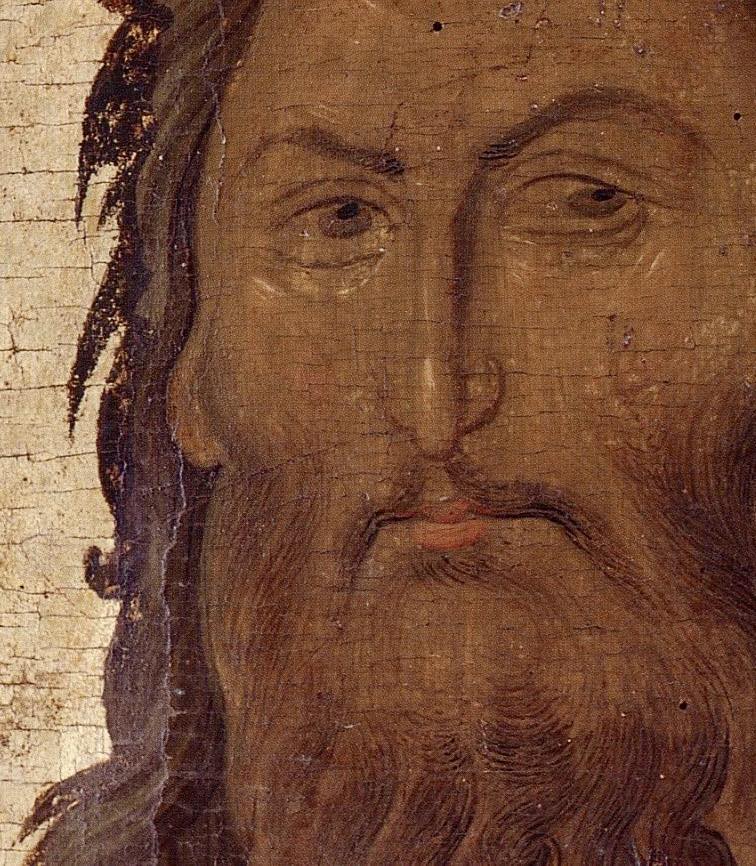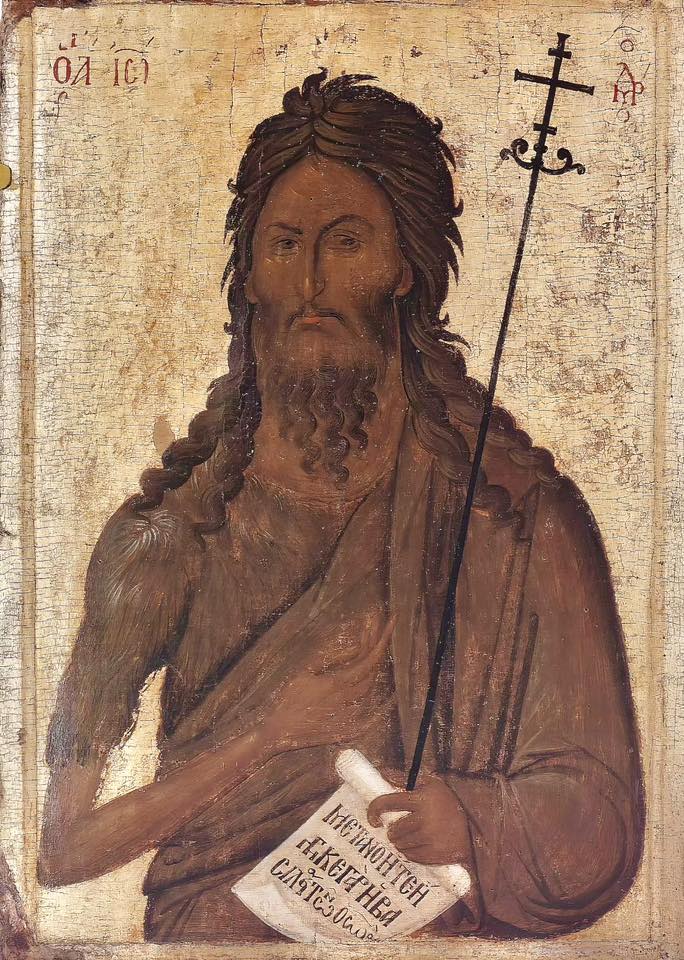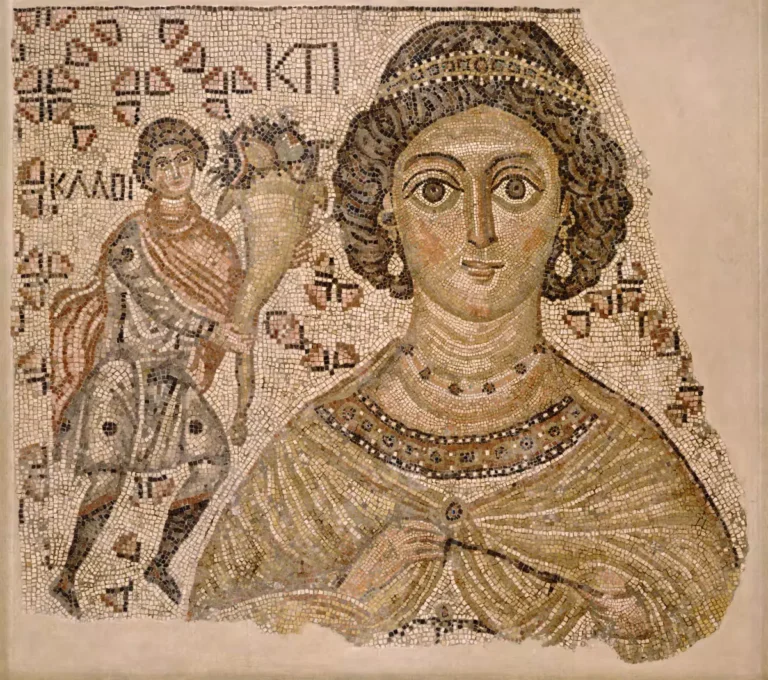Looking for a muse? Check no further. Discover the Best of Art, Culture, History & Beyond!

The Sacred Portrait – A Byzantine Masterwork
Saint John the Baptist Icon from Hilandar Monastery (14th Century)
Encountering the 14th-century icon of Saint John the Baptist from Hilandar Monastery is a moment that transcends mere observation. The prophet’s visage, rendered with meticulous care, draws the viewer into a contemplative state. His eyes, deep-set and intense, suggest a life steeped in asceticism and spiritual fervor.
Emerging from a gold background that has weathered the passage of time, John’s figure exudes a sense of divine presence. The artist’s technique, employing egg tempera and gold leaf on wood panel, showcases a mastery of light and shadow. The earthy tones of his skin, the wildness of his hair and beard, all speak to a life lived in the wilderness, away from worldly distractions.
As noted by Vesna Peno, icons such as this served as bridges between the earthly and the divine, offering viewers a tangible connection to the sacred. The balanced composition and the prophet’s solemn demeanor invite introspection and spiritual engagement.
Nikolaos Vryzidis highlights the incorporation of cultural elements in Byzantine art that resonate with both monastic and lay audiences. John’s simple attire and intense expression establish an immediate connection, while also conveying his otherworldly authority.
The restrained color palette, dominated by earth tones and punctuated by the shimmering gold ground, enhances the icon’s spiritual gravity. The subtle play of light and shadow around the eyes and forehead suggests both the physical toll of ascetic life and the inner illumination of divine insight.
A closer examination of the icon reveals the artist’s sophisticated handling of materials and theological symbolism. The gold background, though aged, retains a luminous quality that seems to emanate from within. The layering of pigments in the face creates a depth that brings the prophet to life.
The scroll in John’s hand, inscribed with Greek text, underscores his role as the voice crying in the wilderness. The delicate rendering of the scroll, appearing almost weightless, emphasizes the ethereal nature of his message.
The depiction of John’s garment, with its intricate folds and shadows, speaks to the physical reality of his ascetic lifestyle. The use of deep browns and ochres evokes the desert landscapes where he preached and baptized.
The icon’s composition guides the viewer’s gaze in a contemplative rhythm, from the prophet’s face to the scroll and cross-staff, and back again. This cyclical movement mirrors the repetitive nature of liturgical prayer, reinforcing the icon’s role as a tool for meditation.

The icon’s aged surface bears witness to centuries of devotion. Its placement in Hilandar Monastery’s treasury room situates it within a continuum of monastic prayer and contemplation. The patina of the gold background, shaped by candle smoke and incense, adds layers of meaning to the image.
The artist’s nuanced treatment of light and shadow imbues John’s face with a sculptural quality. The fine network of cracks across the surface, reminiscent of dry riverbeds, symbolizes the passage of time and the enduring nature of faith.
The subtle asymmetry in John’s gaze and the interplay between the organic flow of his hair and the geometric precision of the scroll create a dynamic tension within the composition. This balance between order and spontaneity reflects the dual nature of his prophetic mission.
The icon’s enduring spiritual presence, despite the wear of centuries, attests to the profound achievement of its anonymous creator. It continues to inspire contemplation and devotion, bridging the gap between past and present.
Focusing on the details of John’s face reveals the artist’s exceptional skill in capturing psychological depth. The modeling of flesh tones, the articulation of hair strands, and the expressive eyes all contribute to a portrayal that is both realistic and transcendent.
The asymmetry in the eyes, with one slightly higher than the other, adds a humanizing touch to the divine subject. The subtle variations in pigment and the interplay of light and shadow create a sense of inner luminosity.
The beard, rendered with rhythmic strokes and tonal variations, enhances the naturalism of the portrait. Fine lines around the eyes and brow convey the weight of contemplation and the passage of time.
The gold ground, visible at the edges, frames the face and suggests a radiance that emanates from within. Even in this close-up, the icon’s theological sophistication is evident, with material skill serving a higher spiritual purpose.
Reflecting on the Hilandar Baptist icon, one recognizes it as more than a work of art; it is a manifestation of a spiritual tradition that seeks to make the divine accessible through material means. The artist’s technical prowess is inseparable from the theological intent, creating an image that serves as a conduit between the earthly and the heavenly.
The icon’s ability to maintain its spiritual efficacy over centuries speaks to the success of this integration. John’s gaze continues to call viewers to reflection and repentance, embodying the timeless nature of sacred art.
This icon exemplifies the Byzantine understanding of art as a bridge between worlds, where human skill and divine inspiration coalesce to create works that transcend time and space.
The creator of this icon remains unknown, a common practice among Byzantine iconographers who viewed their work as an act of devotion rather than personal expression. Working within the artistic traditions of 14th-century Hilandar Monastery, the artist demonstrated exceptional mastery of iconographic techniques.
The sophisticated modeling of form, sensitive handling of color relationships, and the use of egg tempera and gold leaf all point to a deep understanding of both artistic and theological principles. The icon stands as a testament to the enduring power of sacred art to convey spiritual truths across generations.
Bibliography
- Peno, Vesna Sara. “Post-Byzantine Chanting Tradition in the Serbian Monastery Hilandar on Mount Athos.” Musicology Today (2013).
- Vryzidis, Nikolaos. “The Archaeology of Intermediation: Prolegomena on Mongol Elements in Later Byzantine Art and Material Culture.” Crossroads (2023).
- “Hilandar Baptist Icon: 14th Century Byzantine Art.” Byzantica.com. https://www.byzantica.com/hilandar-baptist-icon-14th-century-byzantine/
- “Hilandar Monastery at Mount Athos.” The Byzantine Legacy. https://www.thebyzantinelegacy.com/hilandar
- “The Hilandar Monastery – Preserve Hilandar.” Preserve Hilandar. https://preservehilandar.org/hilandar-monastery/

This article is published on ArtAddict Galleria, where we explore the intersections of art, history, and culture. Stay tuned for more insights and discoveries!

